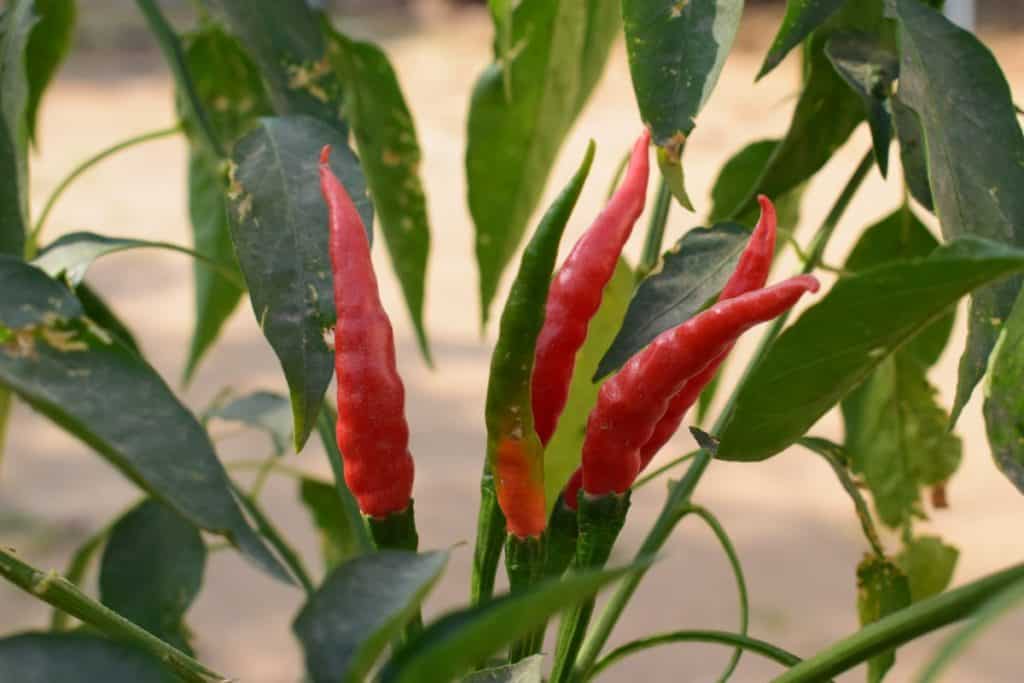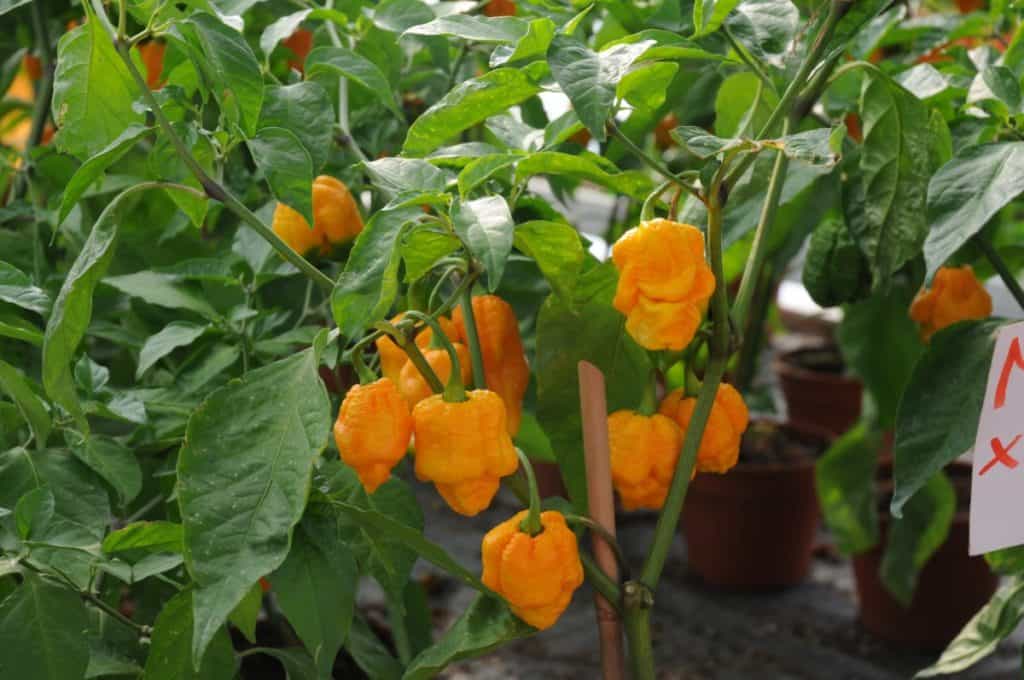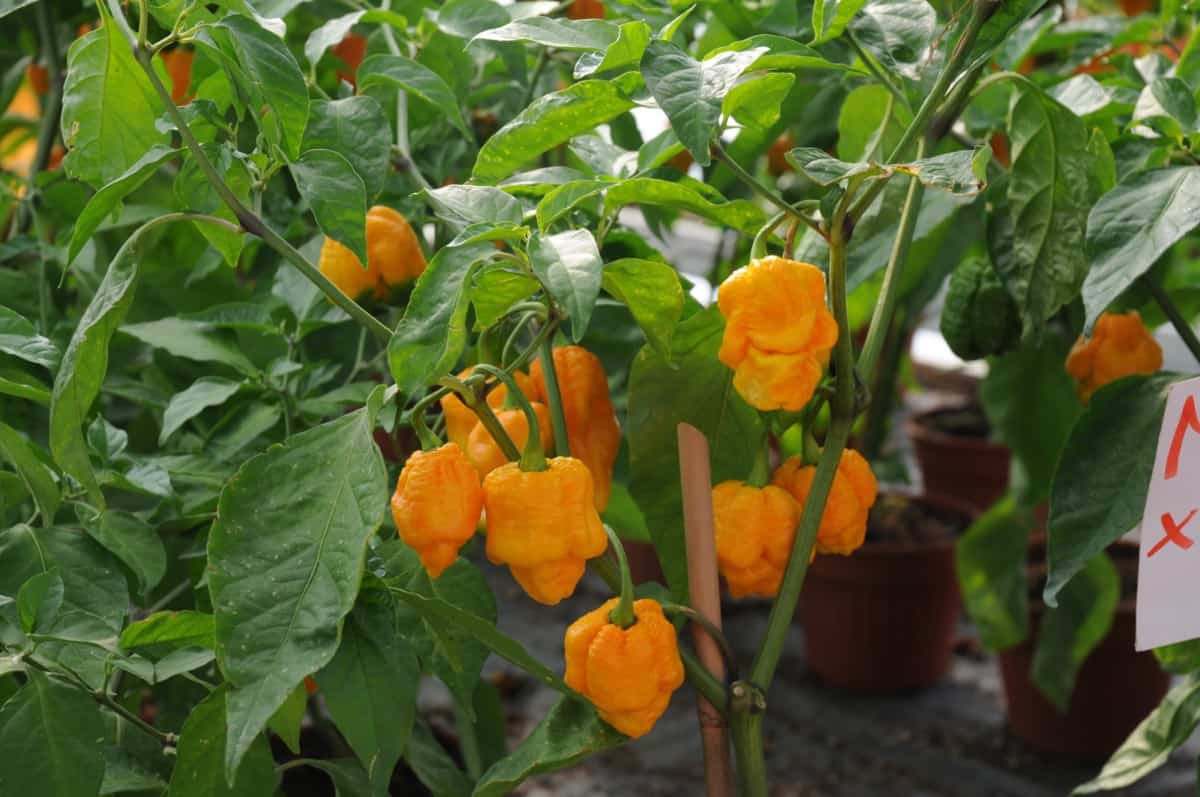
Peppers are the second most popular homegrown plant. One important aspect of gardening is pruning; pruning your peppers can be very beneficial to their growth. The methods used for pruning depend on your plant’s season, whether it is early, mid or late season.
The methods used for each season have different goals.
The method of pruning your pepper plant depends on the season: early, mid or late. Early season includes pinching or pruning the growth point, removing early flowers and extra branches. In the mid-season, prune low and damaged leaves.
Late season entails pruning extra leaves and topping your plant.
There are many gardeners who do and don’t prune their pepper plants which is fine if it is thriving, but pruning can give your plant that extra boost.
The timing of pruning your peppers is vital as it impacts how it will respond; if done at the correct time, it will encourage a higher yield.
Pruning Your Pepper Plants To Improve Its Health And Yield
Like tomatoes, peppers don’t actually have to be pruned, although it still has great benefits. If your peppers are pruned correctly and at the correct time, you will see plenty of perks by doing it.
Some benefits of pruning include strong, sturdy stems, quick ripening fruit, healthy branches, reduced disease and pests, and higher yields.
You can use three methods to prune your peppers; all of them work well and result in a higher yield and a healthy plant. The type you decide to use will depend on what season of the year you are in. They include:
- Early season pruning
- Mid-season pruning
- Late season pruning
Pruning your peppers is not only to produce a higher yield which is highly desired but also to help increase the strength of your plant to withstand high yields. It is also essential to prevent diseases and improve the health of your plant.
In the late season, pruning is vital to help ripen your fruits quickly before the frost hits so that the yield you obtain is well established.
Early Season Pruning
The benefits of early season pruning of your pepper plants are to improve plant branching, root production, and good air circulation. Below are the four ways to prune for this season.
1. Improve Branching By Pruning The Growing Point
Pruning your plants with this method is done when they are very small; during the transplant stage, you prune the flower’s main growing point. Cut off a ½ to 1 inch of your plant’s growth down to where the set of leaves are situated.
Pinching or pruning your small-fruited pepper plants’ central growing point will promote branching and growth, resulting in higher yields of your plant. Examples of small-fruited pepper plants include shishito, habanero, Thai hot, fish, and jalapeno peppers which naturally have a lot of branching.
Large-fruited pepper plants which naturally grow into a Y-shape don’t benefit from pruning and pinching as much. It may cause your plant’s stunted growth; these plants include bell peppers, cubanelles, and poblanos.
2. Space Your Pepper Plants Out Properly
It is crucial to space your pepper plants out correctly to improve productivity and encourage full development, which they can’t do if they are crowded. Plant seedlings in their own pots, and when you transplant them, make sure they are 18-14 inches apart from each other. This will improve the growth and increase the yield of your pepper plant.

3. Remove The Early Flowers Of Your Pepper Plant
When first planting your pepper plant, your goal should be to encourage your plant to develop a sturdy and extensive root system to support itself.
Pruning the early flowers while your plant is in the beginning stages of growth will help promote this. Removing the flowers will encourage your plant to focus its energy on growing rather than on its flowers and fruit.
Removing these new flowers will increase the plant’s strength to have a capacity for a higher yield of peppers. To ensure your plant focus on growing, clip off all the flowers for the first 2-3 weeks after planting it.
If you buy an already growing plant from the nursery with flowers, remove them before transplanting it.
4. Improve Air Circulation By Pruning Out The Extra Side Roots
Prune the extra side roots that form on your young pepper plant to leave a few main roots. This will help improve the air circulation and increase your plant’s exposure to sunlight. This method will help prevent disease and fungal diseases which can occur in wet, humid conditions.
It will improve air movement and allow the foliage to dry off quicker, keeping your plant healthy. With this, remember not to overwater your pepper plants to help avoid this from happening.
Mid-Season Pruning
The reason for the mid-season pruning of your pepper plant is to protect it from pests, prevent your plant from getting too heavy with foliage, and avoid disease. Here are three methods of pruning during this season.

1. Removing The Lowest Leaves Of Your Plant To Prevent Pests
Pruning off the low leaves that may be touching the soil will help prevent pests such as slugs and snails that can easily climb up your plant to get food. Trim off the bottom leaves to make sure 6 to 8 inches of the stem is leafless, do this with a pair of sharp clippers.
It will increase your yield of peppers by preventing damage to the plant and new fruits.
2. Trimming Your Plant To Prevent Disease And Limit Its Spread
It is vital to prune damaged leaves to prevent disease and remove leaves and branches in contact with the soil to prevent soil-borne diseases.
Fungal infections can spread quickly throughout your plant if nothing is done to stop or prevent them. It can be averted by removing leaves that have gone yellow, spotted, or are rotting weekly.
3. Prune Off Branches That Interfere With The Natural Shape Of Your Plant
As discussed above, the large-fruited pepper plants have a Y-shaped natural growth; it is recommended to help promote this growth. If you notice small shoots are growing from nodes where the leaves meet the stem that threatens this natural growth, they should be removed.
If you don’t trim them and let them grow, this will lead to a top-heavy plant that will put most of its energy into the leaves and stems rather than the fruit.
Although it is recommended to remove large-fruited peppers’ small shoots, it is advised not to remove them from smaller-fruited pepper plants. These plants have more bushy growth, and if they are removed, it will result in fewer fruits for the harvest.
Late Season Pruning
There are two ways to prune a pepper plant in the late-season; the goal is to accelerate the color of the fruits and encourage the ripening of fruits before the frost arrives.
1. Encouraging Exposure To Sunlight By Removing Extra Leaves
It is crucial to prune leaves and branches blocking the direct sun on the fruits; increasing the fruits’ light exposure encourages the mature color to develop quicker.
Although you can eat green peppers, waiting for their full colors to establish will improve its taste. Some pepper plants need to be left longer before harvesting to allow their colors’ brightness to develop fully.
In contrast, other varieties of pepper plants’ colors will emerge when they are still immature.
2. Help Your Peppers Ripen And Mature Quicker By Topping Your Plant
To top your pepper plant, you will need to trim all the growing points 3 to 4 weeks before the frost is expected. Prune all the new shoots, flowers, and immature fruits that will not ripen before the frost arrives.
It is vital to do this to make sure your plant directs all its energy into ripening the fruits that will mature before the frost comes.

Additional Tips On How To Prune Your Pepper Plant
Ensure your pruners are clean before using them to reduce the spread of disease, which can sit on your equipment; clean it with an aerosol disinfectant or 10% bleach solution.
It is good to prune your pepper plants when it is dry; if you prune them when it is wet, this can increase the risk of fungal infections entering your plants.
It is best to wear clean gloves when pruning to prevent disease spread, especially if you are a smoker.
Your pepper plant is prone to tobacco mosaic virus, which cigarette smokers can cause; if your plant receives this virus, it will have to be culled.
You can add compost to your pepper plant’s soil; this will help increase its yield and strength.
You can choose to either make your own compost or buy some from the store; compost will provide additional nutrients to your plants. These extra nutrients will help it grow bigger and stronger with lots of healthy fruit.
If you make homemade compost, you can add trimmed foliage, eggshells, food scraps, cardboard, paper, and other biodegradable household trash.
Remember, you do not want to use trimmed foliage with a disease as this will infect the compost heap and the rest of your plants. The more you add to your compost heap, the more it will grow and the faster it will decompose.
Conclusion
Some of these pruning tips and methods can be used for other plants such as tomatoes, eggplants, and other vegetables. It is good to know before pruning how it should be done, when, and with what tools.
Pruning your plant in the different seasons of its life will improve its health and encourage a high yield. It is helpful to know the goals of pruning in the different seasons and how to do it correctly.
The main aspects that improve your pepper plants’ yield and health are good sunlight and protection from pests and disease. It is good to prune your plant to keep its natural shape; if it is not pruned well, this can result in slow growth and lower yields.

